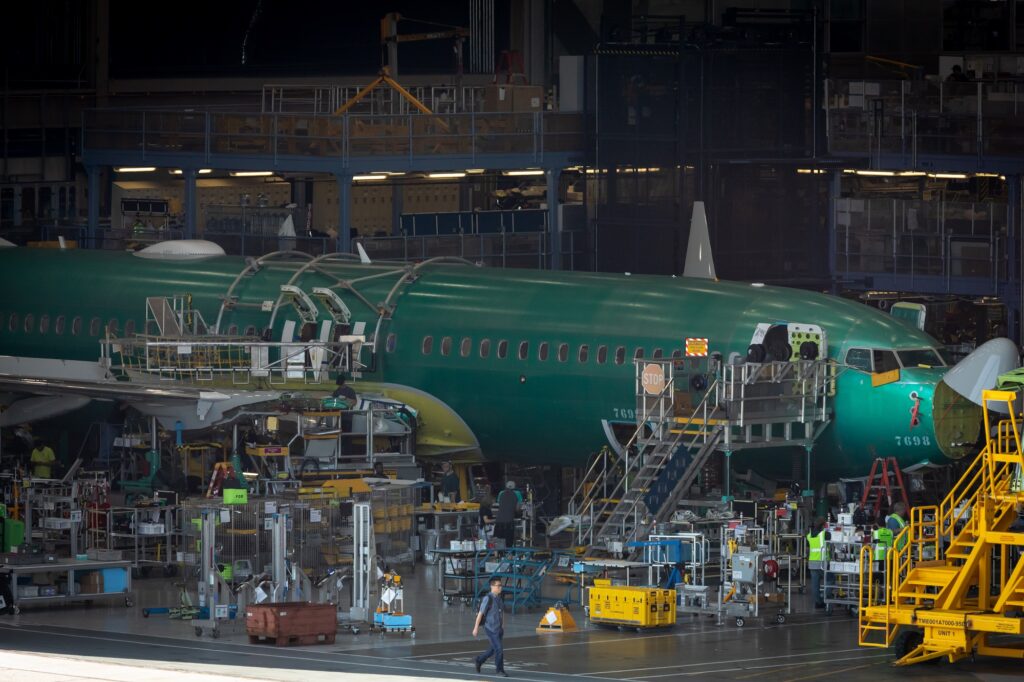Boeing has begun pre-wiring 737 MAX aircraft, getting an early start on reworking the narrow-body jet’s Angle of Attack (AoA) system before the changes are mandated by the European Union Aviation Safety Agency (EASA).
“All the airplanes we are building now are pre-wired,” said Bob Michael, the 737 Customer Leader, in an interview with Aviation Week’s ShowNews. According to Michael, the company began installing the wiring in anticipation of the upcoming changes in the summer of 2022. “There’s a fair amount of wiring that has to be added” for the improved AoA system, noted the Boeing executive. The publication also reported that the manufacturer has been working on a Service Bulletin (SB) to provide information for airlines who are currently flying the 737 MAX.
Ch-aviation.com data showed that since June 2022, Boeing has built 355 aircraft for 37 different airlines globally. Meanwhile, the Original Equipment Manufacturer (OEM) built 53 aircraft of the type for seven different airlines in the European Union (EU), 46 of which are assigned to the Ryanair group (five registered under Malta Air).
Changes to the 737 MAX’s AoA system were mandated by EASA when the authority ungrounded the aircraft in January 2021. Among the requirements for the 737 MAX to return to service (RTS) in the EU, EASA required Boeing to install a MAX Display System, or MDS, with the “AOA DISAGREE” announcement functionality and change the stabilizer trim control wiring, as well as a number of other items, including changes to the Aircraft Flight Manual (AFM).
Post RTS, EASA mandated, included but not exclusive to, integrity enhancements to the AoA system developed and certified for the certification of the 737 MAX-10, a non-critical Systems Safety Analysis (SSA), which will be verified together with the certification of the 737 MAX-10, and safety analysis process updates, also verified for the certification of the 737 MAX-10.
“EASA is confident that the combination of the flight control system architectural update and associated wiring modifications, the revised flight crew procedures, and the new training requirements constitute the necessary elements to safely bring the 737 MAX aircraft back to service,” said the agency at the time.
Looking toward the long-term future, EASA’s RTS report highlighted that the agency and Boeing agreed to two key post-grounding changes: improving the integrity of the AoA system, integrated in the 737-MAX 10 and retrofitted to the whole fleet, and further evaluation of the Crew Alerting System or CAS.
Meanwhile, in the United States (US), the Federal Aviation Administration (FAA), through the Aircraft Certification, Safety, and Accountability Act (ACSAA), will mandate that 737 MAXs would have modern flight crew alerting systems.
While US lawmakers cleared Boeing to proceed with the 737 MAX-7 and MAX-10 certification without a deadline, the Omnibus Appropriations Bill included the requirement to retrofit all Boeing 737 MAXs with modernized versions of the Engine Indicating and Crew Alerting System, or EICAS, one year after the 737 MAX-10 is certified.
Boeing expects the 737 MAX-7 and MAX-10 to be certified in 2023 and 2024, respectively.

